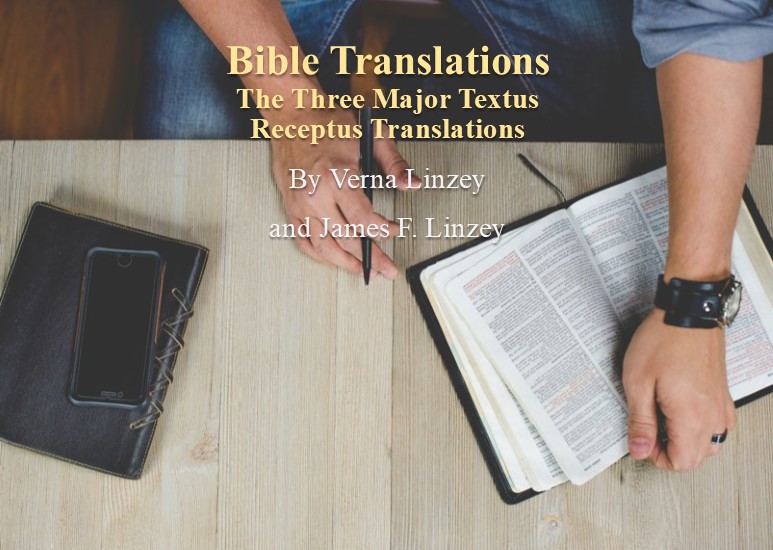Bible Translations: The Three Major Textus Receptus Translations
The mother and son Bible translator team of Verna and James Linzey discuss the major translations of the Bible that have been developed from the Greek New Testament known as the Textus Receptus.

The three major Bible translations based on the Textus Receptus are the Authorized King James Version (1611), the New King James Version (1982), and the Modern English Version (2014). The latter two are updates of the original KJV. Developing an appreciation for how these Bible translations came into being starts more than 500 years ago. In 1516 a Dutch Roman Catholic monk, Desiderius Erasmus, compiled the first complete Greek New Testament from Byzantine text-type manuscripts. He only had a half dozen manuscripts dating from the 13th century, and where he had gaps or lacunae in the manuscripts he used the Latin Vulgate to fill in those sections, especially the last six verses of Revelation.[1] In Elzevir’s Greek NT published in 1633, the term Textus Receptus is used in the preface to provide appellation to the Greek NT published by Erasmus and then subsequently revised by Stephanus, Beza, and Elzevir.
In 1526, William Tyndale translated Erasmus’ Greek New Testament into English.
Tyndale then revised it by 1534. The Tyndale Bible, which included the Pentateuch and Jonah, became the basis of the Authorized KJV, which would not be published until almost a century later. William Tyndale’s translation from the Textus Receptus comprises about 90% of the KJV and 80% of the RSV.[2] Nevertheless, between the Tyndale Bible and Authorized KJV there were the Coverdale (1535), Matthew (1537), Taverner (1539), Great Bible (1539), Geneva Bible (1560), Bishop’s Bible (1568), and Douay-Rheims (NT in 1582 and OT in 1609-10). The KJV 1611 was partly in response to the Catholic Douay-Rheims edition as well as motivation for a “political” Bible to bring together different religious factions under the Church of England.
A century later, the Oxford University Press produced a standard KJV text that would reflect a
more up to date English style for the 18th century. This was the 1769 KJV update edited by Dr. Benjamin Blayney. In addition to the full revision with respect to the English language, it standardized the KJV punctuation and spelling. This update is the edition commonly used today.
Then in 1979, Thomas Nelson publishers asked 130 scholars to edit a New Testament update of the Authorized KJV, eliminating much of the archaic language. The complete NKJV Bible was published in 1982. Along with the numerous other English translations from the previous four centuries, the NKJV was based on the TR, but more strictly speaking the Byzantine-Majority text tradition. Thousands of Greek manuscripts and fragments (not the least of which the 900+ Dead Sea Scrolls discovered in 1945) had been discovered in the last two centuries so textual scholars had the opportunity to reconstruct earlier and better readings of the TR using the Byzantine-Majority text-type manuscripts.[3]
Category: Biblical Studies, Fall 2018


